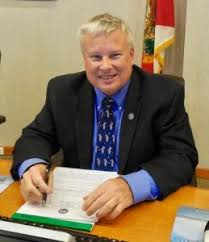Dale Martin
City Manager
Fernandina Beach
September 1, 2017 1:00 a.m.

At a special meeting of the City Commission on Tuesday evening, Chief Jim Hurley, with the assistance of Mr. Andre Desilet, Mr. Jeremiah Glisson, and Mr. Rex Lester (another contributor, Ms. Kelly Gibson, was out-of-town), provided the final details of their review of downtown parking. Despite the wails of a few that this group of senior City professionals would kow-tow to a directed solution from me, this group reviewed, researched, and presented to the City Commission (without any involvement from me) a thorough review of downtown parking.
The genesis of the Parking Committee was the routine clamor that “we have a parking problem.” This parking “problem” has not been specifically defined, so it has been left to everyone’s imagination (or Facebook page) to declare what the downtown parking problem is. The two Parking Committee presentations have greatly helped in defining what the parking problem is not.
The parking problem is not the availability of parking spaces. As illustrated by Mr. Desilet, downtown parking capacity is approximately 850 spaces, half of which are located on-street and the other half in parking lots. With a little outreach, some paint, and a few signs, however, that number has recently grown.
Some on-street areas designated as loading zones have been additionally marked for parking after 5:00 PM, creating seventeen additional spaces. Two smaller spaces for compact vehicles (including golf carts if in compliance with appropriate state regulations) were designated. Parking at City Hall after 5:00 PM and on the weekends has always been available for general use, but new signage has been installed to indicate that availability. Parking lots at the Courthouse (located south of Centre on S. 5th Street) and the County Health Department (located at S. 4th Street and Ash Street) are also available after 5:00 PM and on the weekends. With the addition of those parking facilities, downtown has over 900 available parking spaces. When other on-street areas immediately adjacent to downtown are also considered, the number swells to over 1000. Capacity is not a problem.
Some complain about the location of parking spaces. Again, Mr. Desilet demonstrated that the existing facilities are well-rated for walkable convenience. An “A” level of service indicates that parking is predominantly located within 400 feet of intended destinations. For comparison, the distance from Ash Street to Centre Street is approximately 400 feet. “B” level of service is predominately located within 800 feet of intended destinations. The parking lot south of the boat ramp, often referred to as Parking Lot C, is located 675 feet from Centre Street. Throughout downtown, a vast majority of parking spaces are well within the “B” level of service parameter.
So, with the dispelling of the capacity and convenience “problems,” what, if anything, is the problem? The Parking Committee has identified the problem as the desire of some (not all or even many) business owners and employees to secure the most convenient parking spaces for themselves. While many business owners request more strict enforcement, other business owners/employees circumvent the three-hour limit by either moving to a different nearby space or claiming that they had left and then returned, arguing that the three-hour limit was re-set.
When a citation is issued, the violator will often immediately demand clemency based upon how well the violator knows the patrol officer or Chief Hurley or arguing that the rules shouldn’t apply to the violator because they’ve always done it or been in business for “x” number of years (implying that those with that many years of residency/business are exempt from ordinances).
The intent of the parking regulations is not to generate revenue for the City, but to generate revenue for the businesses. The hope is that when customers or clients find it quick and easy to park and visit a shop, more customers and clients will avail themselves of downtown services. If proprietors and employees make it less convenient for customers, pedestrian traffic is minimized- and I have yet to see a drive-through business on Centre Street.
The City Commission applauded the efforts and research of the Parking Committee. The direction from the Commissioners is to review and recommend changes to the current ordinances in order to address the aforementioned problem of “long-term” parking in areas that are better suited for short-term customer parking. A specific recommendation is that the three-hour limit be reduced to two hours. With significant parking available south of the boat ramp, the two-hour limit may also be considered for the other waterfront lots (Parking Lots A and B). The recently enhanced police presence will continue and other methods using developing technology will be considered as additional enforcement tools.
The City is well-positioned to meet the long-term parking needs for our vibrant downtown- we have no parking problem.
